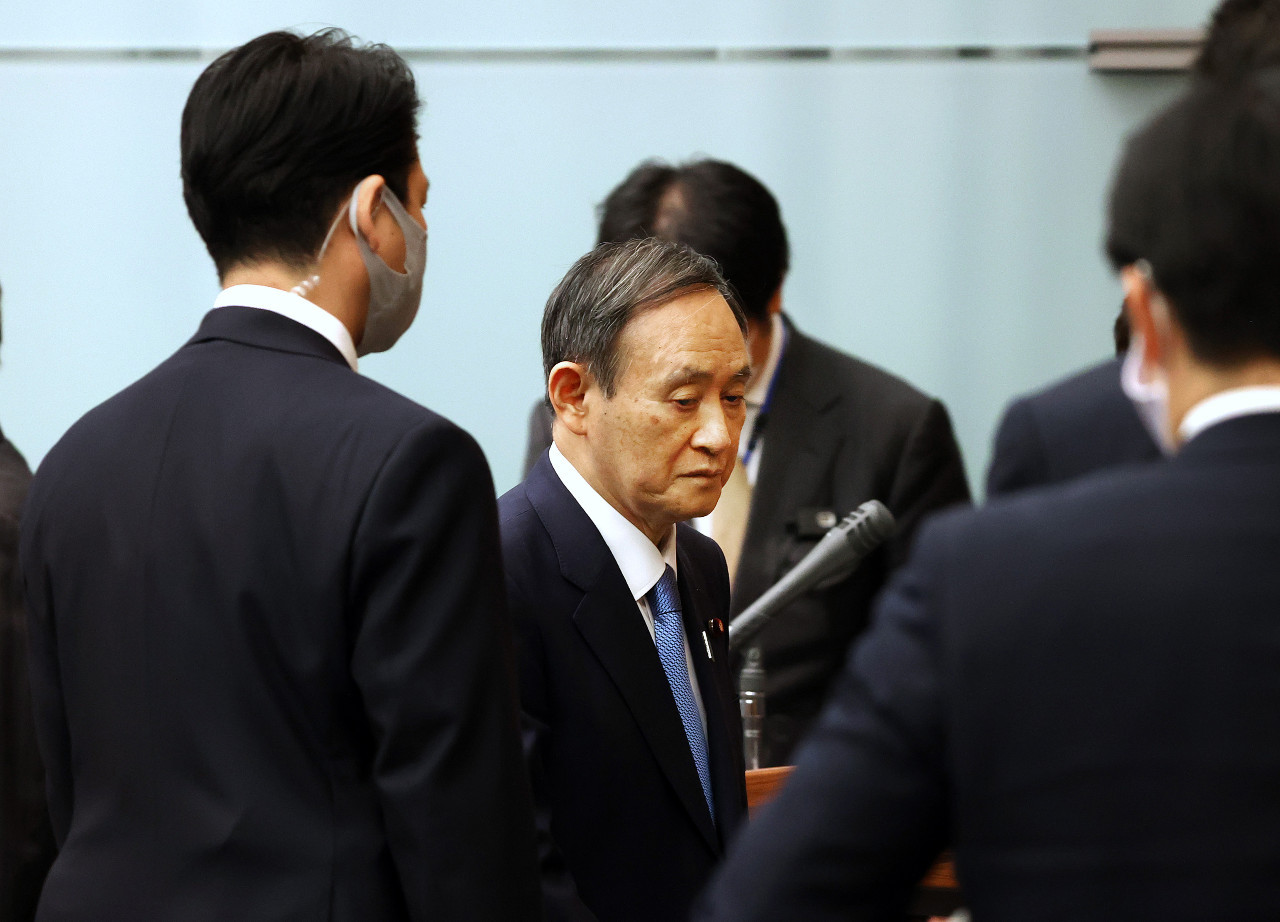Popular Reads
Top Results
Can't find what you're looking for?
View all search resultsPopular Reads
Top Results
Can't find what you're looking for?
View all search resultsJapan set to lift virus emergency but Tokyo metro to keep restrictions
Of the 10 prefectures under the state of emergency, Prime Minister Yoshihide Suga is expected to announce Aichi, Gifu, Osaka, Kyoto, Hyogo and Fukuoka will be removed from the list a week earlier than the scheduled end date of March 7 as infections decline and the strain on hospitals eases.
Change text size
Gift Premium Articles
to Anyone
T
he Japanese government is set to announce Friday it will lift its COVID-19 state of emergency for six prefectures at the end of the month, but the Tokyo metropolitan area will have to wait for further signs of an improving situation.
Of the 10 prefectures under the state of emergency, Prime Minister Yoshihide Suga is expected to announce Aichi, Gifu, Osaka, Kyoto, Hyogo and Fukuoka will be removed from the list a week earlier than the scheduled end date of March 7 as infections decline and the strain on hospitals eases.
The decision comes as the government seeks to revive an economy hit by plummeting household spending and the absence of foreign tourists. Some health experts, however, warn an early exit could lead to a resurgence in infections.
A panel of experts in infectious diseases and other areas met in the afternoon to approve the move, which will be finalized at a meeting of the government's coronavirus task force in the evening.
To exit the state of emergency, a prefecture must see its situation improve from Stage 4, the worst level on the government's four-point scale.
The stages are based on six key indicators, including the weekly number of infections per 100,000 people and the percentage of hospital beds for COVID-19 patients currently available.
Aichi, Gifu, Osaka, Kyoto and Hyogo have all cleared most of the criteria. Fukuoka has lagged in bringing down hospital occupancy rates, but the government expects further progress as infection numbers continue to recede, an official said.
Tokyo and neighboring Kanagawa, Chiba and Saitama have seen some improvement but are to remain under the state of emergency for the time being, a government source said.
Under the state of emergency, people have been asked to refrain from unnecessarily leaving their homes, while restaurants and bars are required to close by 8 p.m. with fines for noncompliance.
Businesses are encouraged to adopt remote working, while attendance at large live events such as concerts and sports has been capped at 5,000.
While the government is eager to get the world's third-largest economy back on track, some health experts have expressed concern an early exit could lead to a resurgence in infections, especially as children enter and graduate from school and companies do their annual new staff intakes. The always busy cherry blossom-viewing season will also enter full swing across the country.
The head of the Japan Medical Association, Toshio Nakagawa, on Thursday warned of complacency among the public, saying, "There is a danger it could send the wrong message that everything is all right now."
Lifting the state of emergency will not mean an immediate return to normalcy, with some measures to be gradually eased. For example, the cap on event attendance will increase to 10,000 before it can be removed entirely.
The nationwide tally of coronavirus cases has fallen from the single-day record of nearly 8,000, logged in early January when the state of emergency was declared, to a little more than 1,000 on Thursday. There were 74 deaths attributed to COVID-19 the same day, down from the peak of 121 in early February but still relatively high.
According to a person in Suga's periphery, he had been leaning toward announcing on Friday that the state of emergency would be lifted for Tokyo and the three neighboring prefectures as scheduled on March 7.
But, the person said, health experts advised him that based on the latest data such a decision would be premature.
Suga initially declared a state of emergency for one month to Feb. 7 for the Tokyo metropolitan area before expanding it to a total of 11 prefectures. The declaration was later extended to March 7 with the exception of Tochigi.










